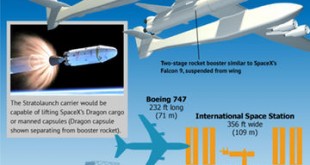NCW is theory of warfare in the information age which hypothesizes that forces which are networked will outperform forces that are not. NCW is an ‘integration of sensors, decision-makers, weapons platforms and support capabilities to enable agility’ providing ‘interoperability and collaboration within and between services’.
According to U.S. Defense Department, Network centric systems increase the quality and degree of shared mission critical information. This permits a common perception of the battlespace to emerge, creating a shared awareness of the environment. This decreases the level of uncertainty, thus improving the degree of decision quality information which improves the quality and degree of sensemaking and interactions. This in turn improves a force’s agility, time to execute, efficiency, and mission effectiveness.
One example of NCW’s success in operations is Link 16, and the advantage it gives to the air forces that make use of it. Link 16, also known as TADIL-J (Tactical Digital Information Link J) is described as a ‘communication, navigation, and identification system that supports information exchange between tactical command, control, communications, computers, and intelligence (C4I) systems.’
The legacy Link 16 is a U.S. and NATO military tactical data exchange network for aircraft, ships, ground forces, and smart munitions. In addition to creating a common tactical picture, Link 16 enables military forces working together to share text messages, imagery, and digital voice communications.
The system uses encrypted messages and transmissions which are jam resistant to provide the user with a whole host of possible applications. These include surveillance, electronic warfare, mission management/weapons coordination, air control, positive friendly identification and network management.
Aircraft that use Link 16 include the F-15, F-16, Eurofighter, F/A-18, and Mirage 2000 jet fighters. One problem with Link 16, however, is its RF signature, which the enemy can use to detect and track Link 16-equipped aircraft.
The Air Force F-22 Raptor jet fighter uses IFDL, which provides a low-probability-of-detection and low-probability-of-intercept inflight data link. The F-35, on the other hand, uses MADL, a fast switching narrow directional communications data link. The problem today is that Link-16, IFDL, and MADL are not compatible.
Air Force experts have tried to bridge the compatibility gap between the three data links with the first increment of the 5th to 4th Gen Gateway, which has been demonstrated by several contractors, including Boeing, Lockheed Martin, and Northrop Grumman.
In addition to an IRST, Air Force experts want the second-increment 5th to 4th Gen Gateway to have beyond-line-of-sight access to national data service providers, and a multi-level security track correlation and data fusion processor, connected to several different data domains.
The F-35 and F-22 communications use unique data-links meaning they can only communicate with other aircraft of the same type. The solution would connect these two unique data-links through a gateway that translates the information. The new system should be able to provide a radio solution guaranteeing interoperability with F-22 over the IFDL data link, and F-35 over the MADL data link, as well as support for IFDL Block 3.1, Block 3.2A, Block 3.2B, and Widenet Reuse; current and future MADL releases; radio interoperability between F-22 and F-35 aircraft; configuration management of the IFDL and MADL waveforms; and meet DD Form 254 requirements.
The US Air Force is set to start testing a secure data-link that will allow its enable its F-35 and F-22 fighters to communicate in December.
The tool being developed by the US Air Force (USAF) will translate information from the two aircraft models allowing pilots to share targeting, location and other data between the two aircraft platforms.
USAF chief systems architect for the Advanced Battle Management System Preston Dunlap announced the move yesterday at the Defense Ones Summit in Washington.
The data-link will allow for the stealth aircraft to communicate vital information without comprising on their stealth capabilities by using traditional radio-wave communications like those used to communicate with non-stealth fighters.
Testing is due to begin in December with new functionality to be released on a quarterly basis. The communications tool is part of a wider push to pull together the US Air Force’s varying information streams.
As the system is developed, the USAF plans to add more platforms, increasing the amount of equipment that can directly communicate across land, air and sea domains.
Both stealth aircraft are designed to penetrate deep into enemy airspace, with one of the F-35’s most advanced features being its network capability. Secure data-links enable the fighter to communicate without giving away its position in hostile environments.
U.S. Air Force researchers are reaching out to industry to find companies able to design an advanced version of the 5th to 4th Gen Gateway that enables jet fighters of different generations to share a common picture over different tactical data links.
Officials of the Air Force Life Cycle Management Center at Hanscom Air Force Base, Mass., issued a sources-sought notice on Tuesday (TBD0001) for Increment II of the 5th to 4th Gen Gateway.
The second-increment system must enable fifth-generation fighters like the F-22 and F-35 to share a common battlespace picture over different tactical data link as the first increment does, but also must have an infrared search and track (IRST) sensor as a stealthy alternative to radar to scan the skies for enemy aircraft.
The second-increment system also must have a means for maintaining satellite communications (SATCOM) during air combat, as well as the ability to create a secure common tactical picture that blends information from the F-22’s inflight data link (IFDL), the F-35’s multi-function advanced data link (MADL), IRST sensors, National Technical Means (NTM), and legacy Link 16 that is accessible to aircraft using Link 16.
References and Resources also include:
https://www.airforce-technology.com/news/usaf-to-test-data-link-between-f-22-and-f-35-aircraft/
 International Defense Security & Technology Your trusted Source for News, Research and Analysis
International Defense Security & Technology Your trusted Source for News, Research and Analysis
